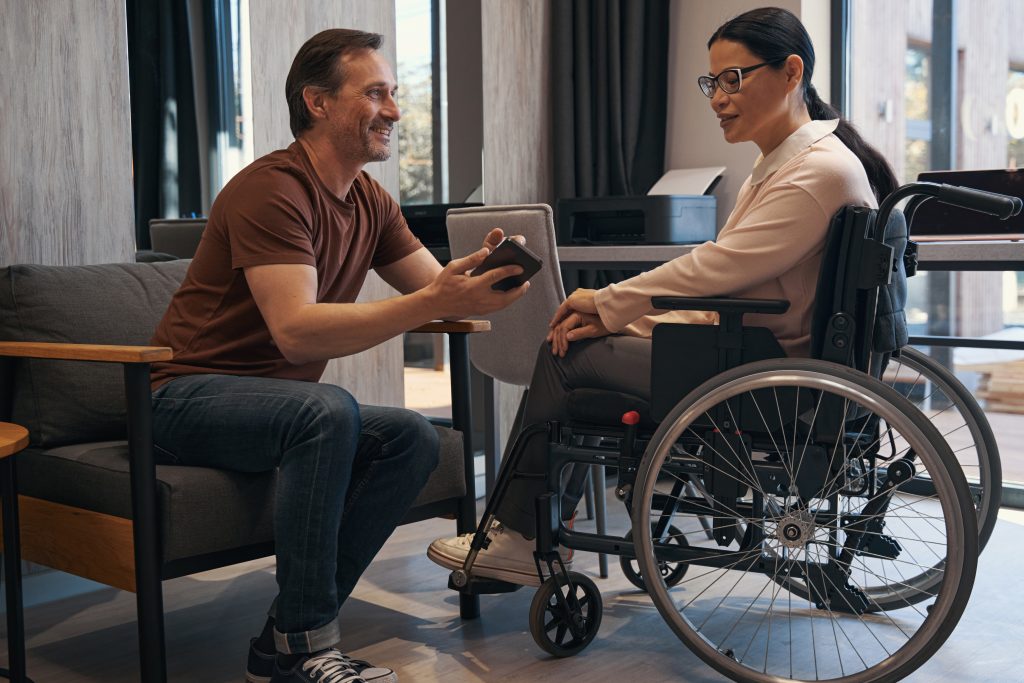Alt Text in SEO for images is also referred to as Alternative Text. The main function of Alt-Text is to communicate what is in the image for the screen reader to access the web page.

A screen reader is an assistive technology that allows people with visual impairments to access web content. It can also read computer documents aloud, allowing the user reading the document to hear what is being written.
Is it possible for Google to read more than 16 words in an image’s Alt Text?
Google can read the image Alt Text which is no more than 16 words long. And if your image Alt Text has more than 16 words, Google’s search algorithm selects the most relevant image from your Alt Textual content.
This concept gets originated from an SEO test that attempts to identify the Text in an image Alt Text that was searchable in Google Images. Another experiment employed non-existent words to be identified, however, Google was unable to uncover photos with more than 16 words to search for them.
The use of meaningless words to test Google yielded erroneous SEO test results. The reason that utilizing gibberish is a bad practice is that Google is meant to rank actual words, not gibberish. So, it’s possible that Google will use its standard algorithm and simply try to match a query to a web page, which isn’t how Google search works typically.
What Effect Does Alt Text in SEO result in?
Setting Alt Text for photos is critical for SEO and one of the most essential contributing aspects to search engine rankings. Alt tags give search engine crawlers conText for what a picture is showing, helping them to properly index the image. Alt tags, on the other hand, not only assist search engine crawlers but can also harm your website’s ranking.
When browsers are unable to produce a website properly, which means the images are not displayed, Alt-Text is also vital. The website will return the Alt attributes instead of images, describing what the image should be showing. If no such Alt Text is used for an image then there display no results which affects the user experience.

The ultimate goal of Alt Text in SEO is to improve accessibility by describing what an image consists of by using the search engine crawlers that boost the SEO rankings. If you don’t use Alt attributes for photos, your website will be difficult to read for screen readers and browsers, reducing the user experience for anyone who is visually impaired. Make sure that all of your website’s photos include meaningful Alt Text so that both visitors and search engines can access your material.
The Best Practices to write Better Alt Text in SEO
Let’s look at how to increase your Alt Text for improved search engine exposure and why Alt Text for photos is important in SEO. When writing Alt Text for photos, here are some best practices to follow:

Don’t be unclear
Because the Alt Text for images is meant to explain the image, it should be as detailed as possible. The idea is to ensure that even if people can’t see the image, they can grasp what it’s about.
Get to the point quickly
While descriptiveness is desirable, you are not required to compose a paragraph to describe the image. Because most screen readers only read up to 125 characters or 16 words of Alt Text, you’ll want to keep your Alt Text for photos short and sweet. If there are too many elements in the image, try to get straight to the point and describe only the most significant elements.
Make use of keywords to improve your website
Alt Text for pictures gives you another chance to use your targeted keywords and educate search engines about the page’s relevancy for a certain search query. You can use any Keyword Research Tool to find extremely profitable and relevant keywords to employ in your Alt Text for images optimization. You shouldn’t, however, utilize this as an opportunity to pack keywords into your Alt Text. Although Google may not penalize you for a poorly written Alt description, keyword stuffing will.
Even if you’re utilizing keywords to improve your Alt Text for photos, it should still be able to convey the image content. You should also avoid using phrases like “image of” or “picture of” in your image Alt Text because it’s expected that you’re talking about an image.
What is the best way to use the image Alt Text?
When it comes to Alt Text, we primarily use it to gain a better understanding of the image. So, if someone looks in Google Images for anything that matches that kind of Alt Text, we can utilize it to figure out if the image is relevant for that Alt Text on that particular page. It’s also worth noting that when it comes to Google Images, you don’t have to describe everything that’s in the picture. But it’s more like what this image symbolizes for your specific page. If you’re unsure what to write in the picture Alt Text, consider how to describe the image to someone with a visual impairment and then use that description in the Alt Text.
Conclusion
While picture Alt Text isn’t worthy of being the main emphasis of your SEO strategy, it is one of those minor important details that should not be overlooked. If you don’t, you’re giving your competitors more chances to outrank you in search engine results. As a result, every time you add an image to your site, make it a habit to write Alt Text for it.
If you have any doubts about the Alt-Text integration or require any SEO services, make sure to contact our SEO team using info@instiqa.com.
